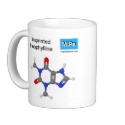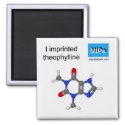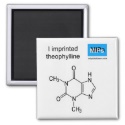|
|
Reference type: Journal
Authors: Lacasta S, Sebastiŕn V, Casado C, Mayoral ÁI, Romero P, Larrea Á, Vispe E, López-Ram-de-Viu P, Uriel S, Coronas J
Article Title: Chiral Imprinting with Amino Acids of Ordered Mesoporous Silica Exhibiting Enantioselectivity after Calcination.
Publication date: 2011
Journal: Chemistry of Materials
Volume: 23
Issue: (5)
Page numbers: 1280-1287.
DOI: 10.1021/cm1032546
Abstract: Chiral ordered mesoporous silica (COMS) was synthesized in basic media by combining tetraethyl orthosilicate and quaternized aminosilane (with a templating role) silica sources together with four different standard amino acids (arginine, histidine, isoleucine, and proline). Besides the hexagonal MCM-41-type structure, narrow pore size distribution, and high specific surface area, it was found that these solids have potential for enantiomeric separation because of the transference of chirality from the amino acid to the silica. This is illustrated by the resolution of several racemic mixtures (those of proline, isoleucine, trans-4-hydroxyproline, pipecolic acid, valine, leucine, and phenylglycine) with the calcined COMS prepared with l-proline. The opposite behavior observed in induced circular dichroism experiments with calcined COMS, obtained using both enantiomers of proline, confirmed their chiral nature. The high number and variety of existing amino acids, and chiral organic compounds in general, makes these ordered silicas attractive for the production of enantiopure substances
Template and target information: arginine, histidine, isoleucine, proline, trans-4-hydroxyproline, pipecolic acid, valine, leucine, phenylglycine
|


 theophylline template mug ball and stick
theophylline template mug ball and stick







 I imprinted theophylline magnet ball and stick
I imprinted theophylline magnet ball and stick







 I imprinted theophylline magnet
I imprinted theophylline magnet






